- Availability: Out Of Stock
- Made & Mkt by: RUISA
- Product Code: 4038-P22-17
- Weight: 800.00g
- Dimensions: 35.00cm x 25.00cm x 15.00cm
The typical dispatch time is 2-3 days; however, in special cases, it may take longer. Please refer to the product details section for specific timelines. Once dispatched, we will share the tracking details with you.
For returns, you can file a request within 24 hours of receiving the product. If the package is damaged, please make a video while unboxing and share images of the damaged item along with your return request.
9328006304 ( WhatsApp )
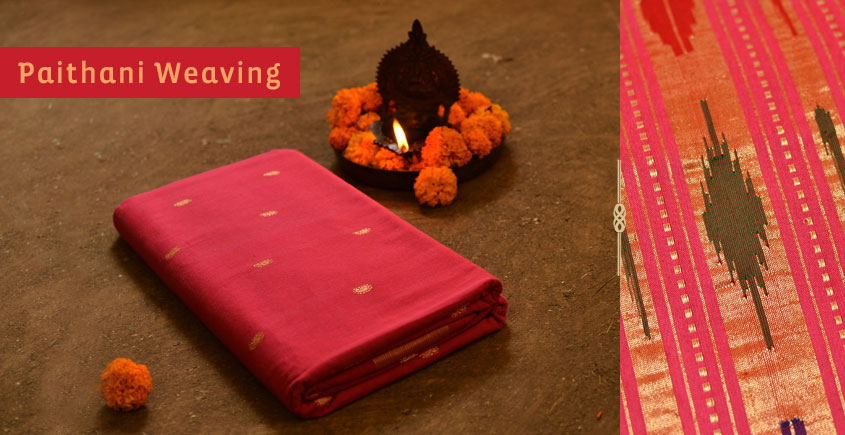
Paithani isfamous for its unique pallus, motfis emerging from its painstakingly complexprocess of weaving. These saris get their name from the place Paithan, wherethis craft hails from. Paithan, also known as Pratishthana isa town in Maharashtra, located in Aurangabad district. In 200BC it also served as the capital of Satavahana Empire underthe rule of Shalivahana. The art of Paithani has survived underchanging rulers. It flourished immensely under the Peshwas, Aurangzeb and Nizams.One of the most famous hand woven saris in India & it is essentially a partof the wedding trousseau of every Maharashtra bride. Paithani uses the ancienttechnique of tapestry where multiple threads ofdifferent colors along with gold and silver threads are woven togetherto form a fascinating piece of silk. A major incident in history of the sariremains the shift in its manufacturing center from Paithan to Yeolain Peshwa period.
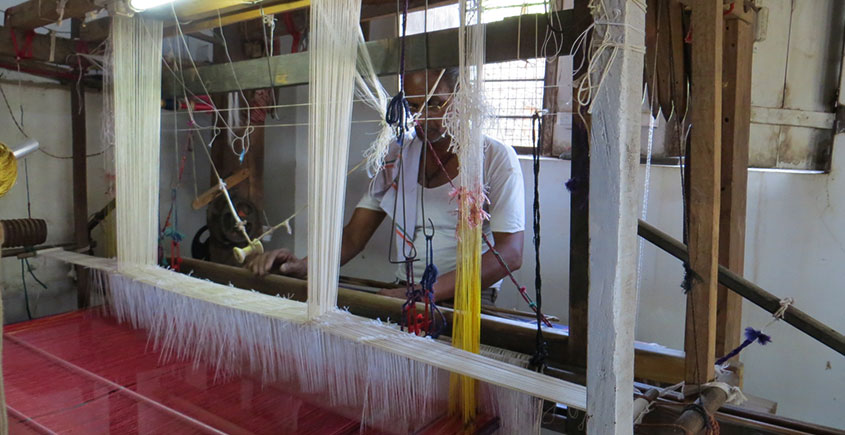
The thesari is traditionally woven by Kshatriya, Koshti,Shali&Nagpuri communities. The task of weaving on loom is mainlyhandled by the men, while women, children and elderly help in pre and postweaving processes. Weaving of a Paithani sari starts with procurement ofraw material. Filiature silk for warp and Cidalgattasilk for weft are sourced from Bangalore and zari comesfrom Surat to Paithan and Yeola. 20-22 denier is used in warp and 30-32 denierin weft. In local usage the warp is known as Tana and weft isknown as Bana and the process of weaving is known as Tana-Bana.
Toprepare the silk for weaving it is important to strengthen the wrap, whichbears the tension of the loom. The raw silk is passed through different stageof sorting, reeling and spinning. The reeled and spun silk is then sentto the dyers. The dyeing process is repeated multiple times till the requireddepth of color is obtained. Originally, organic dyes were used for dyeing thesilk. The dyes were obtained from various roots, flowers and metal oxides,which give colors such as Pophali (deep yellow), obtained fromturmeric root and light yellow obtained from marigold flower petals. Deepyellow and orange colors are today obtained from Papadkhar (sodiumbicarbonate) and Kapila (mallotusphilippensis) powder.
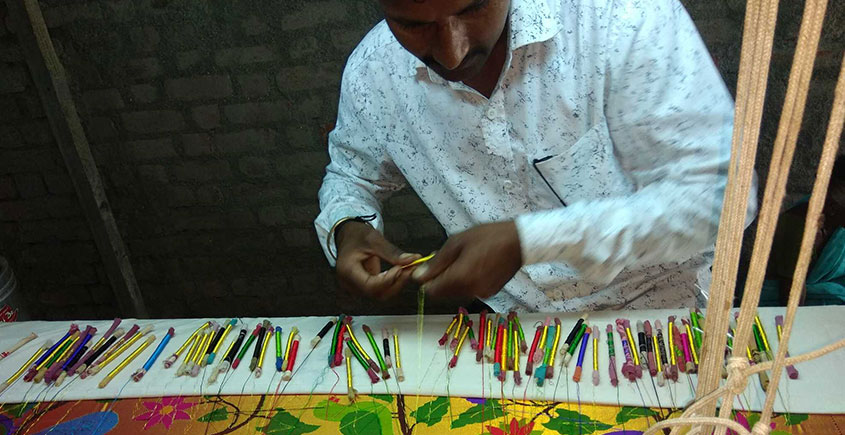
Afterthe dyeing process is completed, the yarn is received by the weavers in theform of bundles. For weaving a fly shuttle loom is used. The first part of thesari to be woven is the Pallu or the Padar.The Pallu is woven in zari weft over a silk warp. The zari inold Paithani saris was silver with a wash of gold but has been replaced bybronze now a days. The Pallu contains all the distinctive motifs of Paithani;such as the Mor, BangdiMor, Kamal, Asawali and Akruti, making it the mostintricate and time-consuming part of the sari. It takes anywhere from two weeksto two months to weave, depending on its length, level of detail andintricacies of the motifs. The body of the sari is the next part. It is definedby a border along both edges. The sari might have a total of 200 to 300 Butiswoven in it. And a complete Paithani should have all the Butishandwoven, whichmakes it a slow and time-consuming process. These Butis are woven in differentkinds of motifs such as peacocks, flowers, petals, paisa (coin) and parinda(bird).
Thesemotifs in a Paithani sari are created by four methods - Paper designs, dobbydesigns, geometrical designs and jacquard designs. Some of the popular motifsare MorButti (Peacock Motif), NaraliKinar (CoconutBorder), Koyari (Mango) etc.

Oncea sari is completed, it is taken off from the loom and sent for cutting. The normallength of such a sari is about 11 feet. It is then folded properly and packed.No ironing or further printing is required.
In older times, thecost of Paithanis, ranged between Rs.30 toRs. 200. At present its cost is inthe range of Rs. 3000 to Rs. 48,000.
Content Courtesy: Minstry of Textiles & CraftMark.
| Craftsmen | |
| Made by | RUISA |
| Returns and Exchange | |
| Note | ♦ The items in this category are not refundable. ♦ The products in this category is handmade. These might slightly differ from as seen on digital screen. |
| Material | |
| Made of | Cotton Silk |
| Instruction | |
| About Sizes | 608 x 115 (Blouse line up in saree length ) |
| Note | ♦ Imperfections and variations in the product cannot be termed as defects, as these are intrinsic to the handmade process. ♦ These might slightly differ from as seen on digital screen. |










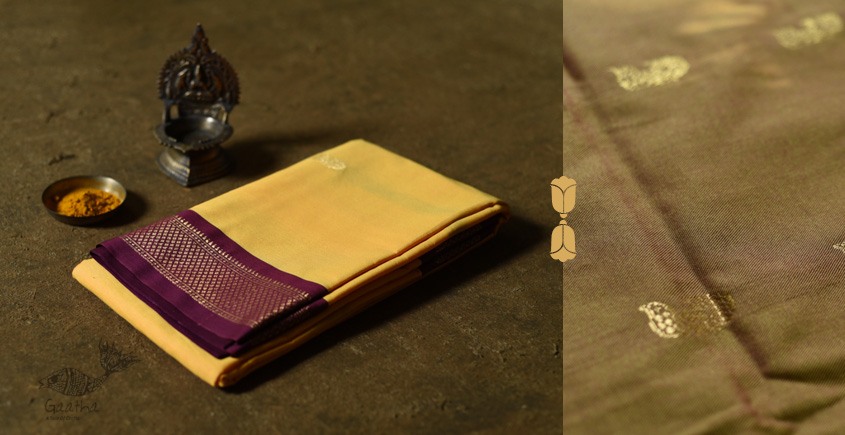
.jpg)
.jpg)
.jpg)
.jpg)
.jpg)
.jpg)
.jpg)
.jpg)

-80x80w.jpg)
-80x80w.jpg)
-80x80w.jpg)
-80x80w.jpg)
-80x80w.jpg)
-80x80w.jpg)
-80x80w.jpg)
-80x80w.jpg)

-225x150w.jpg)
-225x150w.jpg)
-225x150w.jpg)
-225x150w.jpg)
-225x150w.jpg)
-225x150w.jpg)
-225x150w.jpg)
-225x150w.jpg)
-225x150w.jpg)
-225x150w.jpg)
-225x150w.jpg)
-225x150w.jpg)
-225x150w.jpg)
-225x150w.jpg)
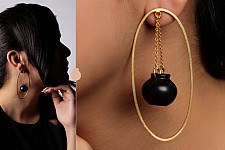
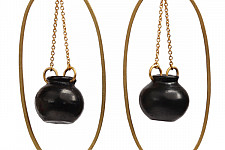
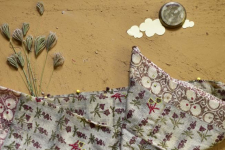
-225x150w.jpg)
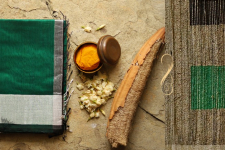
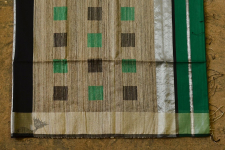
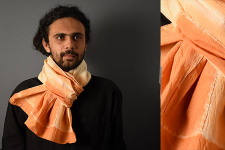
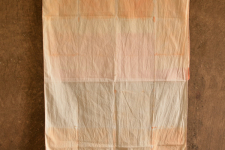
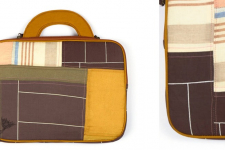
-225x150w.jpg)
-225x150w.jpg)
-225x150w.jpg)
/16_05_2023/Gond-Art-Hand-Painted-Gond-Painting-Tree-Of-Life-225x150h.jpg)
/16_05_2023/36-1-225x150w.jpg)









-225x150w.jpg)

-225x150w.jpg)

-225x150w.jpg)
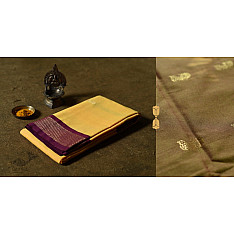
-234x234w.jpg)